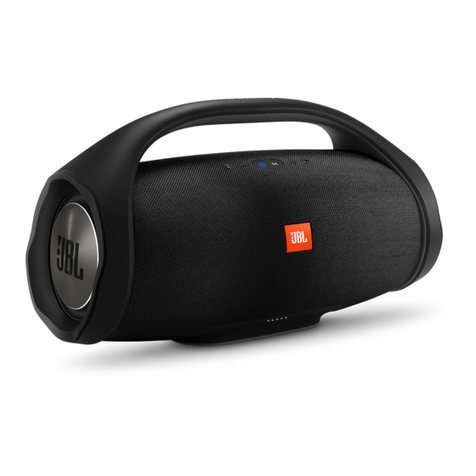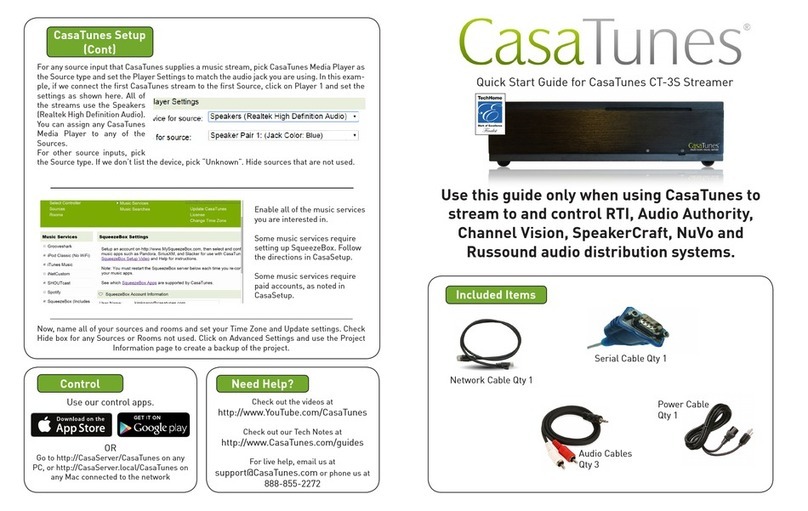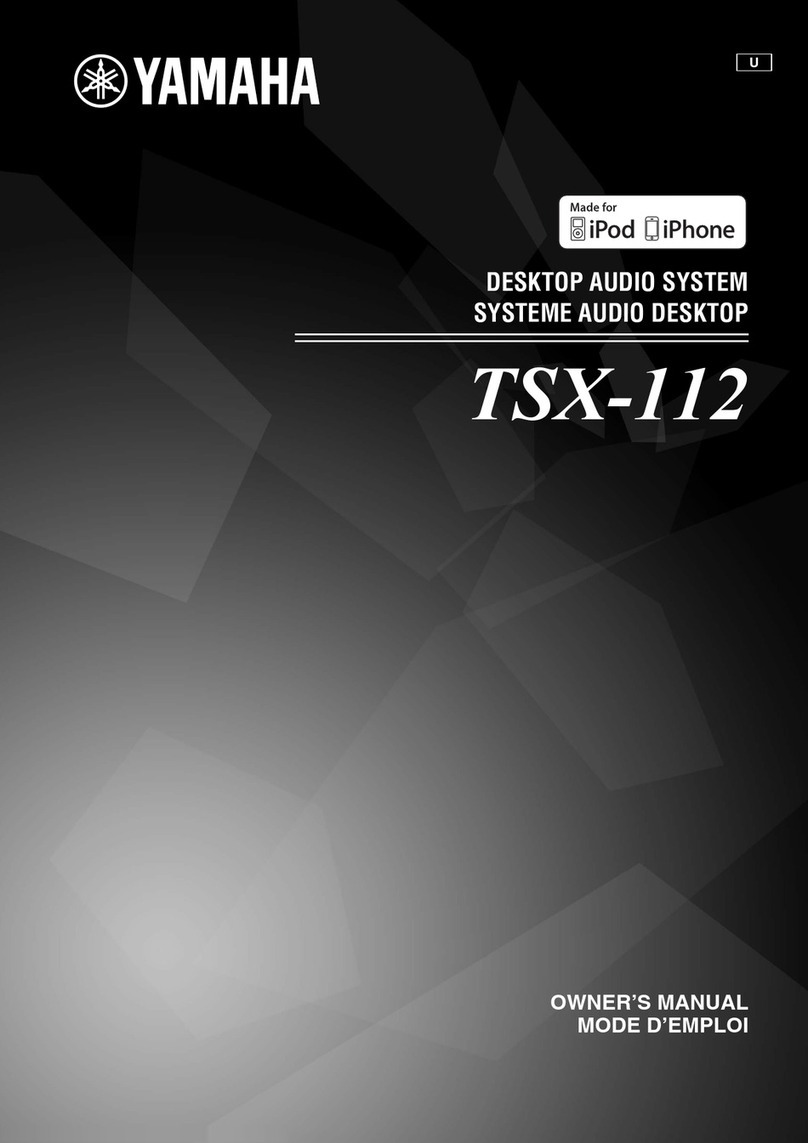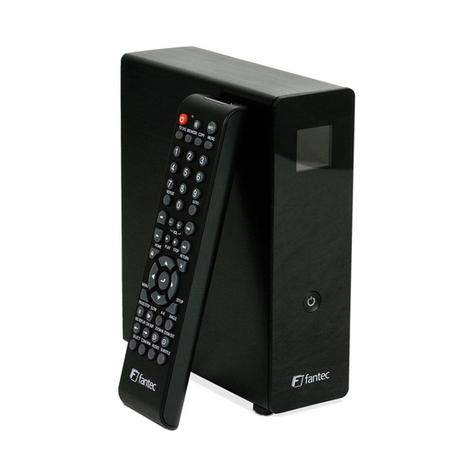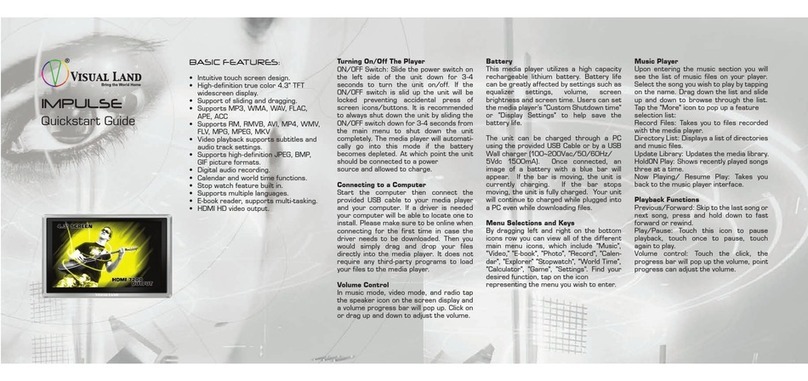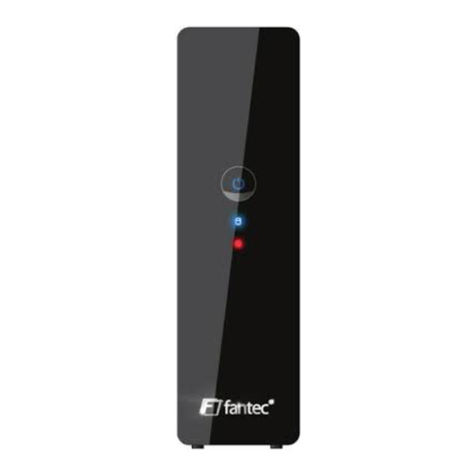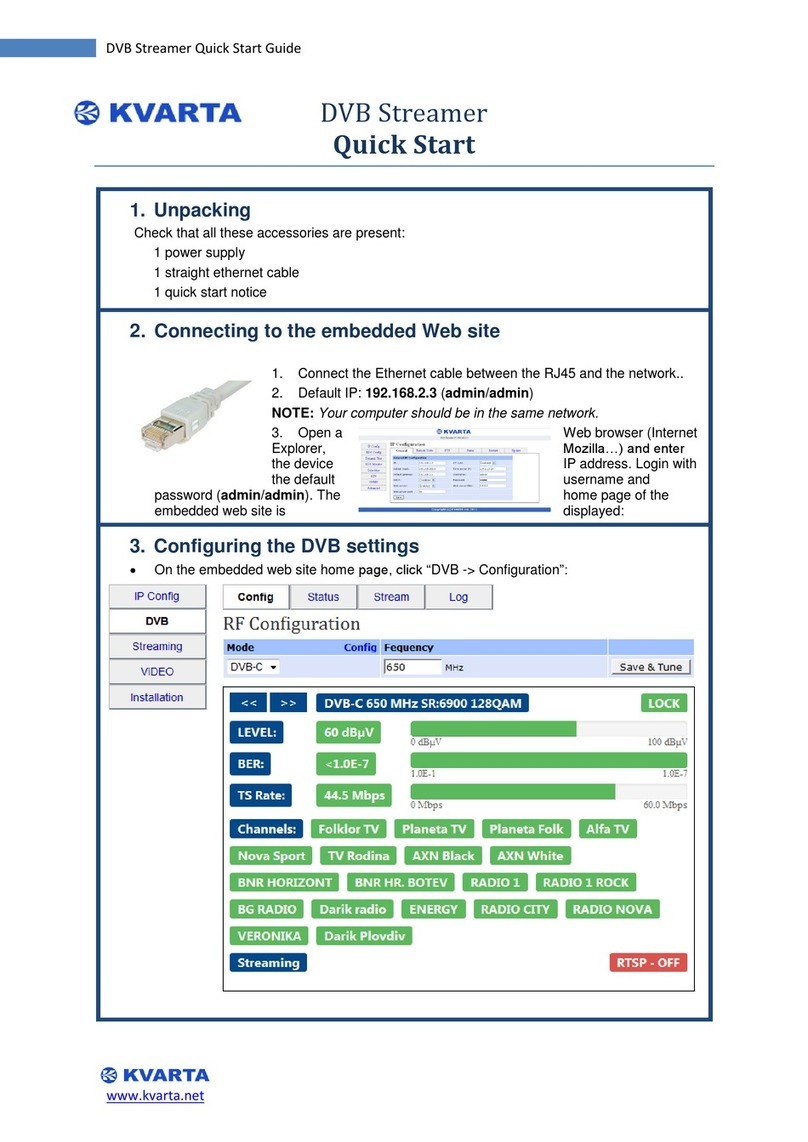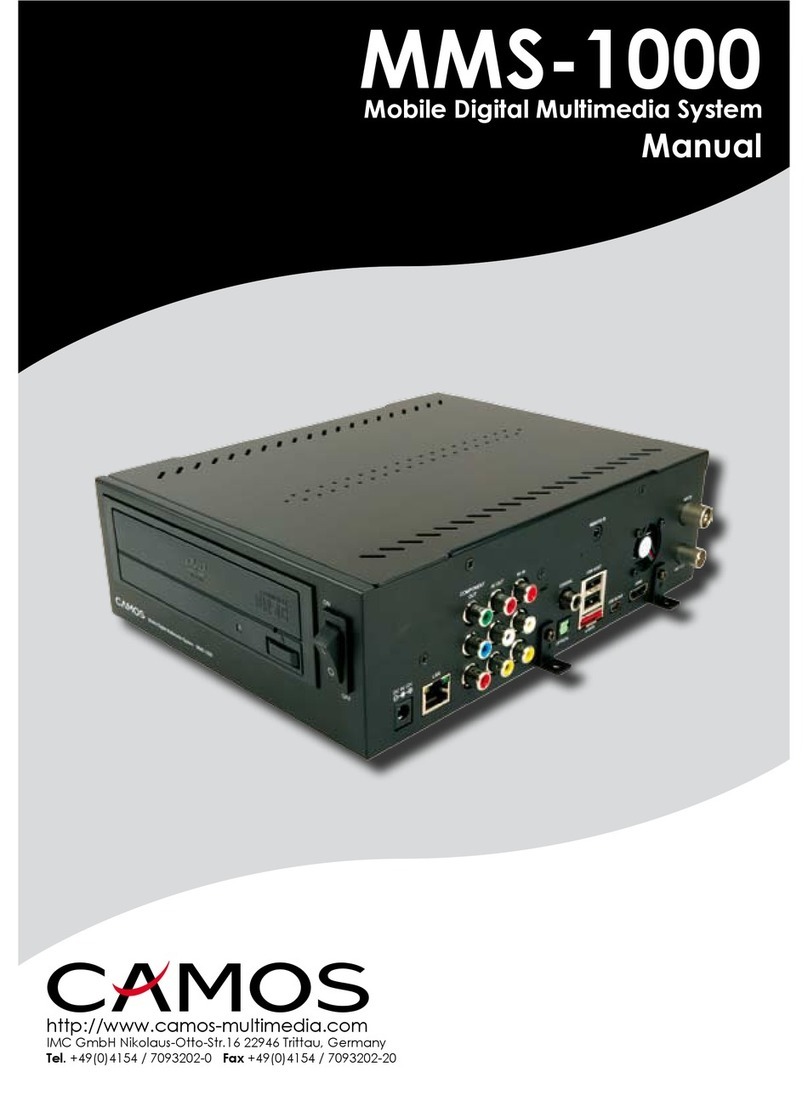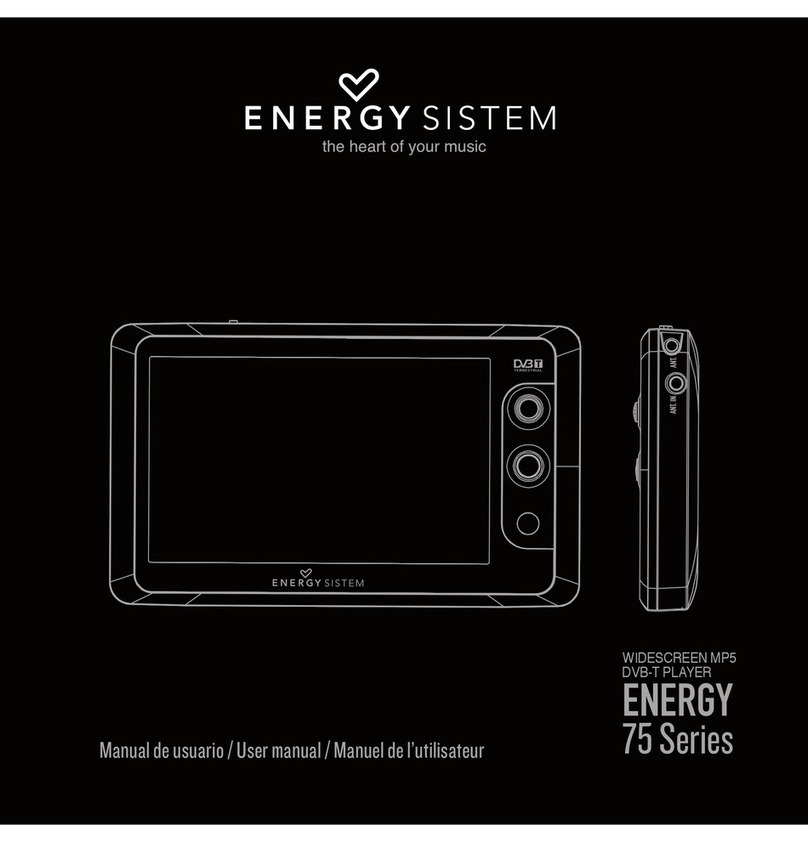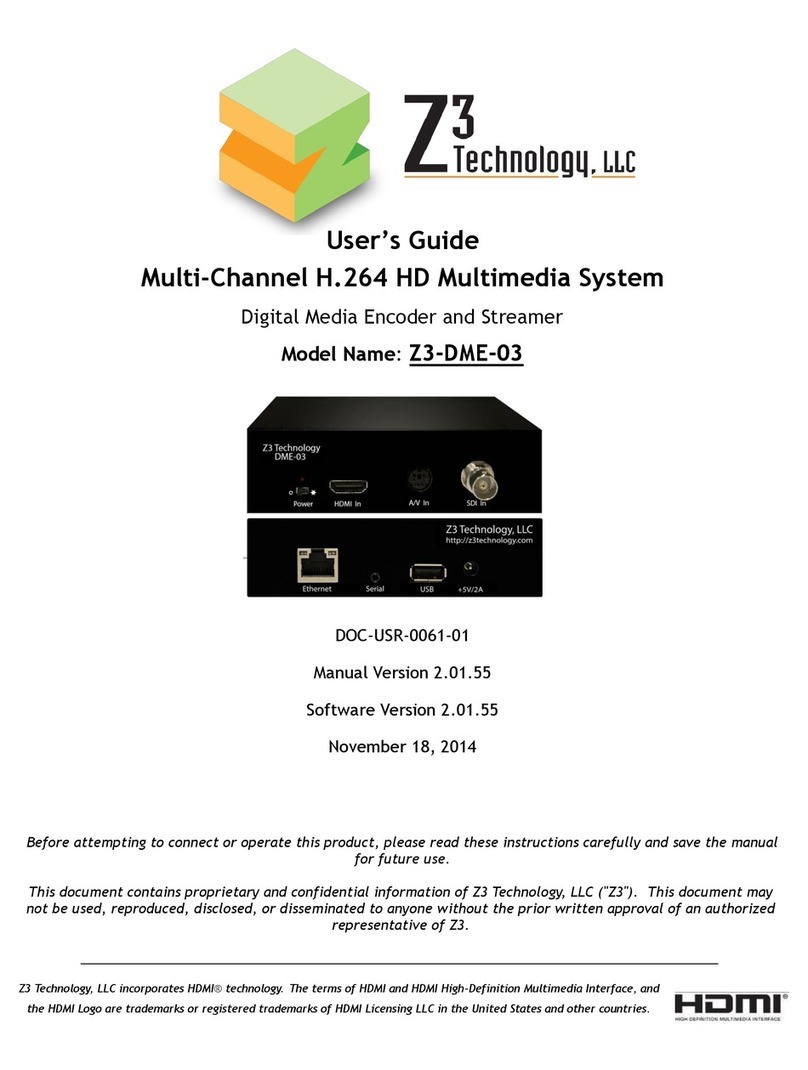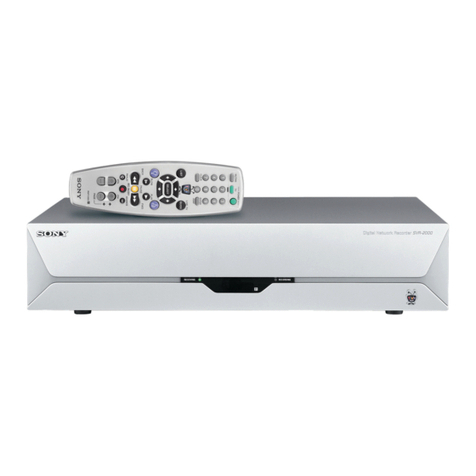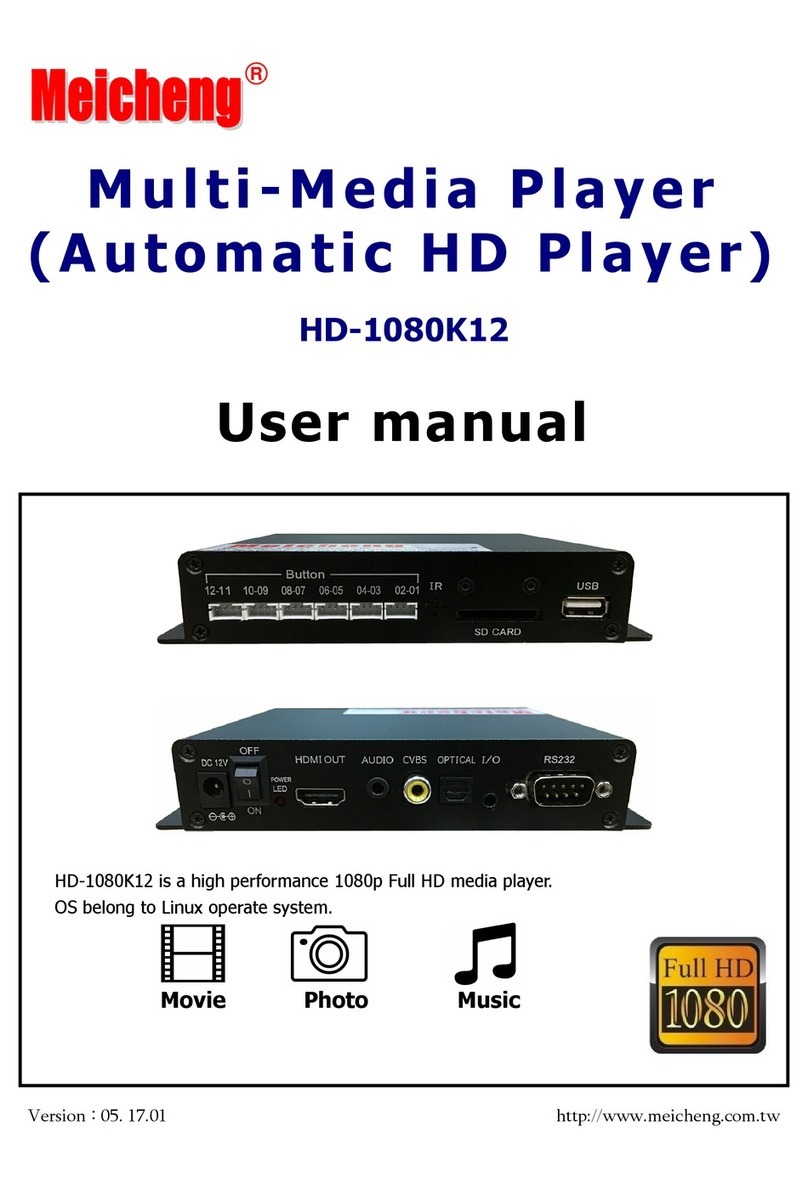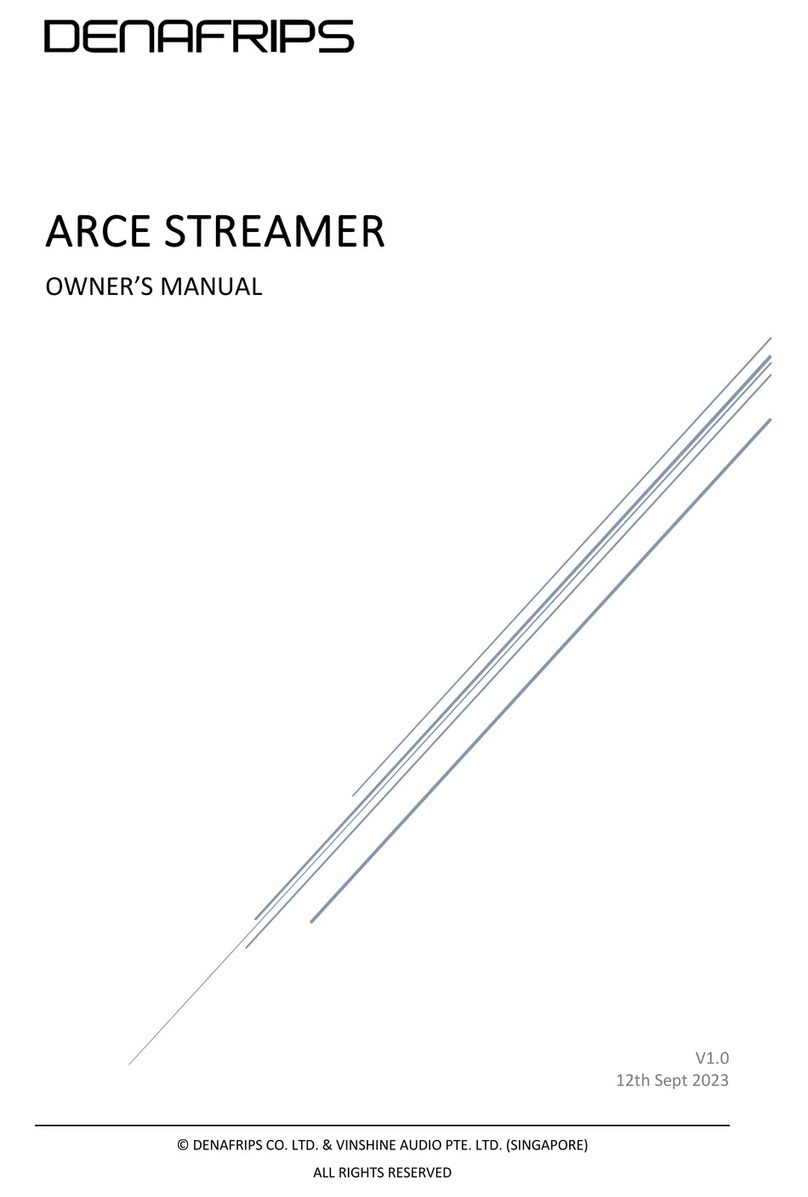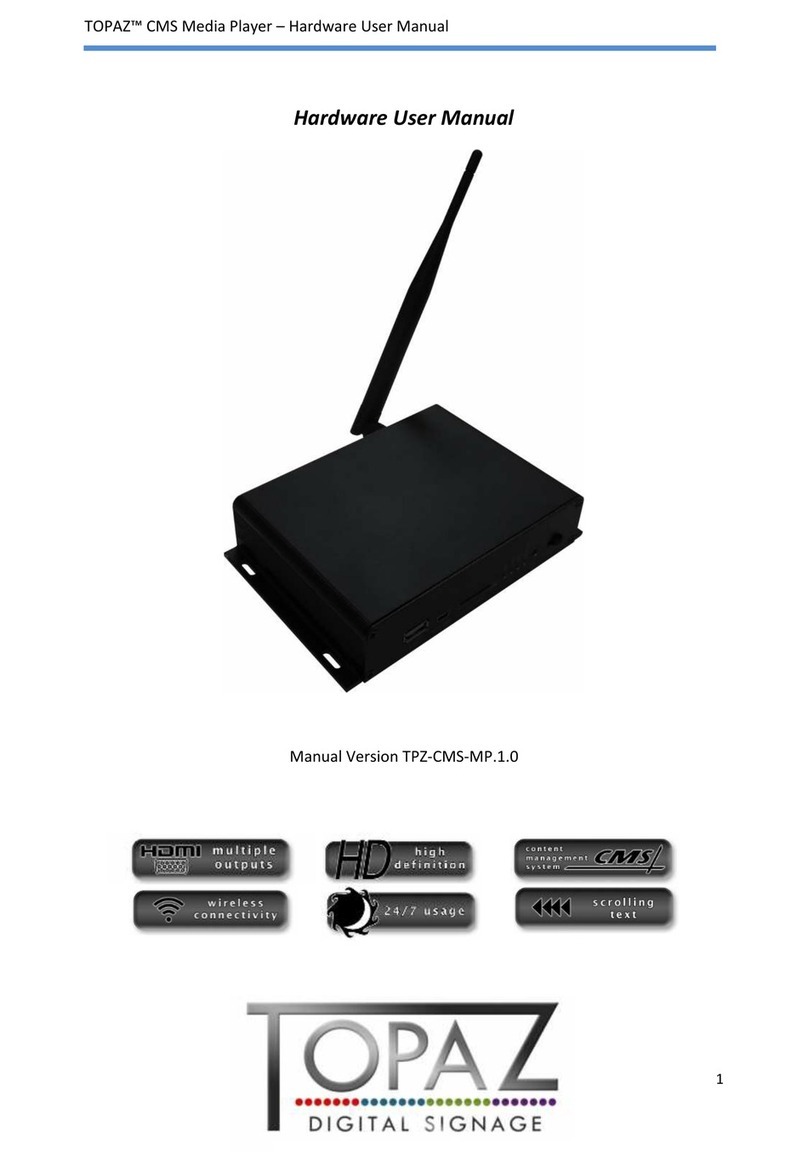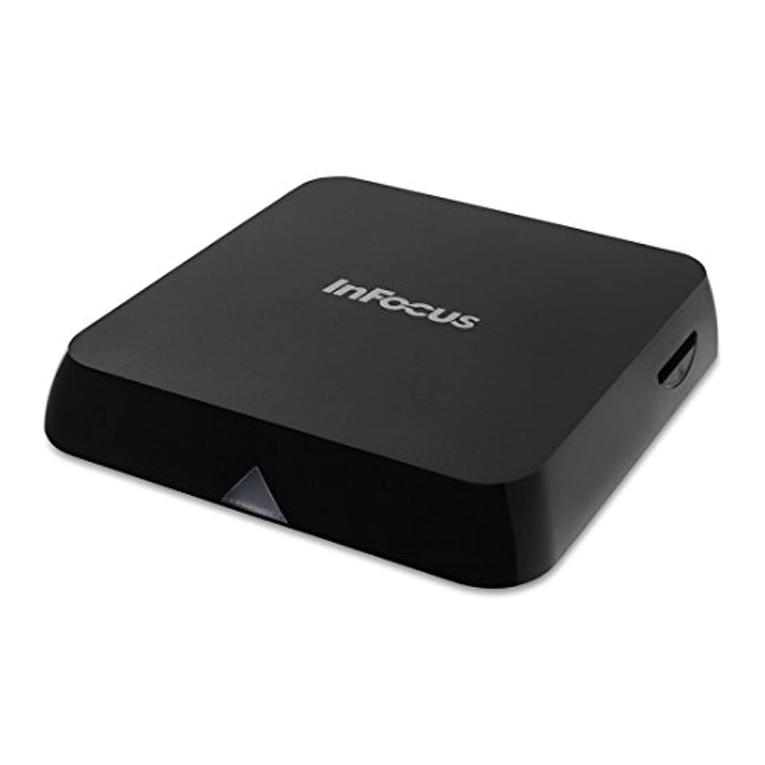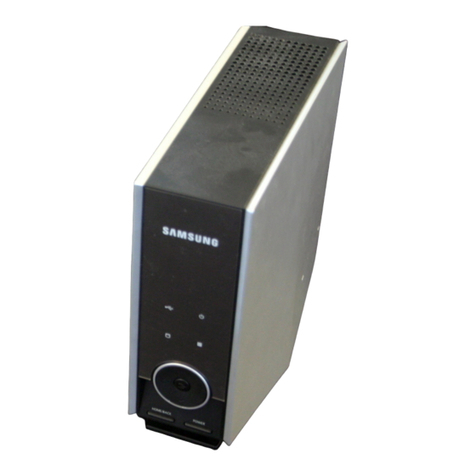JBL DVD280 User manual

Model DVD 280
DVD/CD/CD-R/CD-RW/VCD MP3 Player
Service Manual
- Contents -
SERVICE PRECAUTIONS………….……….……2
SPECIFICATIONS……………………….…..…….5
FRONT PANEL CONTROLS………….………….6
INFORMATION DISPLAY…………….…….…….7
REMOTE CONTROL………………………..…….8
REAR PANEL CONNECTIONS……………..….11
CONNECTIONS/SETUP……….…………..........12
TEST SCREEN………………………………..….15
BASIC TROUBLESHOOTING GUIDE….…..….16
EXPLODED VIEW.…………………………….…17
BLOCK DIAGRAM.……………..……………..…18
PCB DRAWINGS…………………………………19
ELECTRICAL PARTS LIST ……………………..23
MECHANICAL PARTS LIST ……………………29
SEMICONDUCTOR PINOUTS…….……………31
SYSTEM CONFIGURATION SPECS………….38
SCHEMATICS………………………………..…..39
PACKAGE………………………………………...53
JBL Consumer Products
250 Crossways Park Dr.
Woodbury, New York 11797 Rev0 4/2005

1
SERVICING PRECAUTIONS
NOTES REGARDING HANDLING OF THE PICK-UP
1. Notes for transport and storage
1) The pick-up should always be left in its conductive bag until immediately prior to use.
2) The pick-up should never be subjected to external pressure or impact.
2. Repair notes
1) The pick-up incorporates a strong magnet, and so should never be brought close to magnetic materials.
2) The pick-up should always be handled correctly and carefully, taking care to avoid external pressure and
impact. If it is subjected to strong pressure or impact, the result may be an operational malfunction
and/or damage to the printed-circuit board.
3) Each and every pick-up is already individually adjusted to a high degree of precision, and for that reason
the adjustment point and installation
screws should absolutely never be touched.
4) Laser beams may damage the eyes!
Absolutely never permit laser beams to enter the eyes!
Also NEVER switch ON the power to the laser output part (lens, etc.) of the pick-up if it is damaged.
5) Cleaning the lens surface
If there is dust on the lens surface, the dust should be cleaned away by using an air bush (such as used
for camera lens). The lens is held by a delicate spring. When cleaning the lens surface, therefore, a cot-
ton swab should be used, taking care not to distort this.
6) Never attempt to disassemble the pick-up.
Spring by excess pressure. If the lens is extremely dirty, apply isopropyl alcohol to the cotton swab. (Do
not use any other liquid cleaners, because they will damage the lens.) Take care not to use too much of
this alcohol on the swab, and do not allow the alcohol to get inside the pick-up.
Storage in conductive bag
NEVER look directly at the laser beam, and don’t let contact
fingers or other exposed skin.
Magnet
How to hold the pick-up
Conductive Sheet
Cotton swab
Pressure
Pressure
Drop impact
2

2
NOTES REGARDING COMPACT DISC PLAYER REPAIRS
1. Preparations
1) Compact disc players incorporate a great many ICs as well as the pick-up (laser diode). These compo-
nents are sensitive to, and easily affected by, static electricity. If such static electricity is high voltage,
components can be damaged, and for that reason components should be handled with care.
2) The pick-up is composed of many optical components and other high-precision components. Care must
be taken, therefore, to avoid repair or storage where the temperature of humidity is high, where strong
magnetism is present, or where there is excessive dust.
2. Notes for repair
1) Before replacing a component part, first disconnect the power supply lead wire from the unit
2) All equipment, measuring instruments and tools must be grounded.
3) The workbench should be covered with a conductive sheet and grounded.
When removing the laser pick-up from its conductive bag, do not place the pick-up on the bag. (This is
because there is the possibility of damage by static electricity.)
4) To prevent AC leakage, the metal part of the soldering iron should be grounded.
5) Workers should be grounded by an armband (1MΩ)
6) Care should be taken not to permit the laser pick-up to come in contact with clothing, in order to prevent
static electricity changes in the clothing to escape from the armband.
7) The laser beam from the pick-up should NEVER be directly facing the eyes or bare skin.
Resistor
(1 Mohm) Conductive
Sheet
Resistor
(1 Mohm)
Armband
3
DVD280

3
ESD PRECAUTIONS
Electrostatically Sensitive Devices (ESD)
Some semiconductor (solid state) devices can be damaged easily by static electricity. Such components com-
monly are called Electrostatically Sensitive Devices (ESD). Examples of typical ESD devices are integrated cir-
cuits and some field-effect transistors and semiconductor chip components. The following techniques should
be used to help reduce the incidence of component damage caused by static electricity.
1. Immediately before handling any semiconductor component or semiconductor-equipped assembly, drain off
any electrostatic charge on your body by touching a known earth ground. Alternatively, obtain and wear a
commercially available discharging wrist strap device, which should be removed for potential shock reasons
prior to applying power to the unit under test.
2. After removing an electrical assembly equipped with ESD devices, place the assembly on a conductive sur-
face such as aluminum foil, to prevent electrostatic charge buildup or exposure of the assembly.
3. Use only a grounded-tip soldering iron to solder or unsolder ESD devices.
4. Use only an anti-static solder removal device. Some solder removal devices not classified as "anti-static"
can generate electrical charges sufficient to damage ESD devices.
5. Do not use freon-propelled chemicals. These can generate electrical charges sufficient to damage ESD
devices.
6. Do not remove a replacement ESD device from its protective package until immediately before you are
ready to install it. (Most replacement ESD devices are packaged with leads electrically shorted together by
conductive foam, aluminum foil or comparable conductive materials).
7. Immediately before removing the protective material from the leads of a replacement ESD device, touch the
protective material to the chassis or circuit assembly into which the device will by installed.
CAUTION : BE SURE NO POWER IS APPLIED TO THE CHASSIS OR CIRCUIT, AND OBSERVE ALL
OTHER SAFETY PRECAUTIONS.
8. Minimize bodily motions when handing unpackaged replacement ESD devices. (Otherwise harmless motion
such as the brushing together of your clothes fabric or the lifting of your foot from a carpeted floor can gen-
erate static electricity sufficient to damage an ESD device).
4
DVD280

DVD280 TECHNICAL SPECIFICATIONS
Applicable Disc: Disc formats: 5-inch (12cm) or 3-inch (8cm) DVD-Video, standard
conforming DVD-R, DVD+R, DVD-RW, DVD+RW, VCD, SVCD, CD, CD-R, MP3,
WMA, JPEG or CD-RW discs
Region code: DVD Movie disc with Code shown on rear panel of unit only
DVD-Layers: Single Side/Single Layer, Single Side/Dual Layer, Dual Side/Dual Layer
Audio formats: Linear PCM, MPEG, MLP/CPPM Dolby Digital or DTS Audio Discs
Video Signal System: PAL and NTSC
Composite Video Output: 1V p-p/75 ohms, sync negative polarity
S-Video Output: Y/Luminance: 1V p-p/75 ohms, sync negative polarity
C/Chrominance: 0.286V p-p
Component Video Output: Y: 1V p-p/75 ohms, sync negative polarity
Pr: 0.7V p-p/75 ohms
Pb: 0.7V p-p/75 ohms
Analog Audio Output: 2V rms max
Frequency Response: DVD (Linear PCM): 2Hz – 22kHz +0/–0.5dB (48kHz sampling)
2Hz – 44kHz +0/–0.5dB (96kHz sampling)
CD: 2Hz – 20kHz +0/–0.5dB
Signal/Noise Ratio (SNR): 113dB (A-weighted)
Dynamic Range: DVD: 100dB (18-bit)/105dB (20-bit)
CD/DVD: 96dB (16-bit)
THD/1kHz: DVD/CD: 0.0025%
Wow & Flutter: Below Measurable Limits
AC Power: 110 – 240V/50 – 60Hz
Power Consumption: 12 Watts (On)/20 Watts (Max)
Dimensions (W x H x D): 440mm x 89mm x 298mm (17-5/16" x 3-1/2" x 11-3/4")
Weight: 3.1kg (6.9 lb)
Depth measurement includes knobs and connectors.
Height measurement includes feet and chassis.
All specifications subject to change without notice.
JBL is a registered trademark of Harman International Industries, Incorporated.
“Dolby”and the double-D symbol are trademarks of Dolby Laboratories.
Confidential unpublished works. Copyright 1992-1997 Dolby Laboratories. All rights reserved.
“DTS” is a registered trademark of Digital Theater Systems, Inc.
Microsoft, Windows, Windows Media and WMA are either registered trademarks or trademarks of Microsoft Corporation in
the United States and/or other countries.
Kodak and Photo CD are trademarks of Eastman Kodak Company.
This product incorporates copyright protection technology that is protected by method claims of certain U.S. patents and
other intellectual property rights owned by Macrovision Corporation and other rights owners. Use of this copyright protection
technology must be authorized by Macrovision Corporation and is intended for home and other limited viewing uses only
unless otherwise authorized by Macrovision Corporation. Reverse engineering or disassembly is prohibited.
DVD280 OM 7/12/04 4:42 PM Page 47
5
DVD280

11
FRONT-PANEL CONTROLS
VIDEO
DVD280 High Performance DVD/CD Player
Standby
Dimmer Test
2345
Power
17
689 ) !@#
JPEG
VCD
DVD
WMA
MP3 PROG RANDOM REPEAT 1 ALL A-B V.OFF TEST P.SCAN
TITLE TRACK CHAPTER PBC HOUR MIN SEC
Main Power On/Off: Press this
switch to apply power to the DVD280.
Once the unit has been turned on with
this switch, the Power Indicator
2
will light up in red, and the DVD280
may be turned on from either the front
panel or remote control. Press the
switch again to turn the unit com-
pletely off.
1
Power On/Off (Standby): Press the
button once to turn the DVD280 on,
and the Power Indicator
2
will turn
orange. Press it again to put the unit
in the Standby mode and the Power
Indicator
2
will turn back to red.
Note that in order for this switch to
operate, the Main Power Switch
must be pressed in so that it is in the
ON position.
2
Power Indicator: This LED will be
illuminated in red when the unit is in
the Standby mode to signal that the
unit is ready to be turned on. When
the unit is in operation, the indicator
will turn orange.
3
Disc Drawer: This drawer is used
to hold the discs played in the unit.
Be certain to seat all discs carefully
within the recess in the drawer. Do
not press down on the drawer when
it is open, to avoid damage to the
player.
4
Eject: Press this button to open or
close the disc tray.
5
Play: Press to initiate playback or
to resume playback after the Pause
Button
6
9
has been pressed.
6
Pause: Press this button to
momentarily pause playback. To
resume playback, press the button
again. If a DVD is playing, action will
freeze and a still picture will be dis-
played when the button is pressed.
7
Stop: Press this button once to
place the disc in the Resume mode.
Playback will stop, but as long as
the tray is not opened or the disc
changed, DVD playback will continue
from the same point on the disc when
the Play Button
5
B
is pressed
again. Resume will also work if the
unit was turned off. To stop a disc and
have play start from the beginning,
press the button twice.
8
Skip (Previous): Press this button
to move backward through the music
tracks on a CD or the chapters on
a DVD.
9
Skip (Next): Press to move for-
ward through the music tracks on a
CD or the chapters on a DVD.
!
Dimmer: Press this button to
reduce the brightness of the Main
Information Display
#
by 50% or to
turn the display off completely in the
following order: FULL BRIGHTNESS ➔
HALF BRIGHTNESS ➔OFF ➔FULL
BRIGHTNESS.
B
Test: Press this button to display
a test picture on the screen, which
enables you to optimally adjust the
color parameters on your video dis-
play, such as brightness, contrast,
color intensity and tint.
#
Main Information Display: This
display delivers messages and status
information to help you operate the
DVD player. See page 12 for a com-
plete explanation of the display.
Main Power On/Off
1
Power On/Off (Standby)
2
Power Indicator
3
Disc Drawer
4
Eject
5
Play
6
Pause
7
Stop
8
Skip (Previous)
9
Skip (Next)
!
Dimmer
B
Test
#
Main Information Display
DVD280 OM 7/12/04 4:41 PM Page 11
6
DVD280

12
FRONT-PANEL INFORMATION DISPLAY
QPONMLKJIHGF
BC
JPEG
VCD
DVD
WMA
MP3 PROG RANDOM REPEAT 1 ALL A-B V.OFF TEST P.SCAN
TITLE TRACK CHAPTER PBC HOUR MIN SEC
ADE
F
F
ADisc-Type Indicators
BPlayback-Mode Indicators
CTitle Number Indicators
DChapter/Track Number Indicators
ETime Indicators
FHour/Minute/Second Indicators
GProgressive Scan Indicator
HParental Lock Indicator
IAngle Indicator
JTest Indicator
KV-OFF Indicator
LVCD Playback Control Indicator
MA-B Repeat Indicator
N
Chapter/Track/Title Indicators
ORepeat Indicators
PRandom Indicator
QProgram Indicator
ADisc-Type Indicators: The DVD,
CD, JPEG, MP3, VCD or WMA indica-
tor will light to show the type of disc
currently being played.
BPlayback-Mode Indicators: These
indicators light to show the current
playback mode:
›Lights when a disc is playing in the
normal mode.
›› Lights when the disc is in the Fast
Search Forward mode. The on-screen
banner display indicates the selected
speed (2x, 16x, 64x, 200x). The third
triangle will light when the search
speed reaches 16x, and will remain
lit if the speed is increased to 64x
or 200x.
ÍÍ
Lights when the disc is paused.
‹‹
Lights when the disc is in the Fast
Search Reverse
mode. The on-screen
banner display indicates the selected
speed (2x, 16x, 64x, 200x). The third
triangle will light when the search
speed reaches 16x, and will remain
lit if the speed is increased to 64x
or 200x.
Note that the fast-search speeds
above are for DVDs only. Fast-search
is also available for VCDs, SVCDs and
CDs, but only at two speeds, 4x and
32x. Fast-search is not available for
MP3s or WMAs.
CTitle Number Indicators: These
two positions in the display will show
the current title number when a DVD
disc is playing.
DChapter/Track Number Indicators:
When a DVD disc is playing, these
two positions in the display will show
the current chapter. When a CD is
playing, they will show the current
track number.
ETime Indicators: These positions
in the display will show the running
time of a disc in play. When a DVD is
playing, these indicators will show
the time elapsed or remaining for the
current chapter or title. When a CD,
VCD or SVCD is playing, these indica-
tors will show the time elapsed or
remaining for the current track or
disc. When an MP3 or WMA file is
playing, these indicators will show
the elapsed time for the current file.
See page 35 for more information on
the time display.
NOTE: The indicators CDE will
also display text messages about
the DVD280’s status, including
READING when a disc is loading,
and DISC ERROR when a disc is
not compatible with the DVD280.
FHour/Minute/Second Indicators:
These indicators are used with the
Time Indicators Eto show current,
remaining or total time.
GProgressive Scan Indicator: This
indicator lights when the DVD280’s
progressive scan video outputs are
activated.
HParental Lock Indicator: This indi-
cator lights when the parental lock
system is engaged in order to prevent
anyone from changing the rating level
without a code.
IAngle Indicator: This indicator
blinks when alternative viewing
angles are available on the DVD
currently playing.
JTest Indicator: This indicator lights
when the video test screen is activated.
KV-OFF Indicator: This indicator
lights when the unit’s video output
has been turned off by pressing the
Video Off Button
E
on the remote
control.
LVCD Playback Control Indicator:
This indicator lights when the play-
back control function is turned on
for VCDs.
MA-B Repeat Indicator: This indica-
tor lights when a specific passage for
repeat playback has been selected.
NChapter/Track/Title Indicators:
These indicators are used with the
Title Number Indicators Cand the
Chapter/Track Number Indicators D
to display the current track for CDs,
VCDs and SVCDs, and the current
Title and Chapter for DVDs.
ORepeat Indicators: These indica-
tors light when any of the Repeat
functions are in use.
PRandom Indicator: This indicator
lights when the unit is in the Random
Play mode.
QProgram Indicator: This indicator
lights when the Playlist has been set
to the programmed order using the
Player Menu of the Graphic User
Interface. See page 43 for more infor-
mation.
DVD280 OM 7/12/04 4:41 PM Page 12
7
DVD280

13
REMOTE CONTROL FUNCTIONS
a
bc
d
e
f
f
g
hh
i
j
k
l
m
n
o
`
z
y
x
w
v
u
t
s
r
q
p
0
Power On
1
Repeat
2
Playlist
3
Audio
4
Eject
5
Navigation ⁄/¤Buttons
6
Info
7
Navigation ‹/›Buttons
8
Enter
9
Pause
A
Skip/Step (Previous)
B
Play
C
Search/Slow Reverse
D
Stop
E
Video Off
F
Display Dimmer
G
Clear
H
Title
I
Numeric Keys
J
Light
K
A-B Repeat
L
Zoom
M
Angle
N
Pic –
O
Pic +
P
Search/Slow Forward
Q
Skip/Step (Next)
Status
Disc Menu
Setup
Subtitle
Random
Power Off
DVD280 OM 7/12/04 4:41 PM Page 13
8
DVD280

14
REMOTE CONTROL FUNCTIONS
0
Power On: Turns on the player
when it is in Standby mode (the JBL
logo appears on-screen).
1
Repeat: Press to go to the Repeat
menu. You can repeat a title, chapter,
track, programmed playlist or the
entire disc.
2
Playlist: Press this button to
access the playlist on-screen menu.
See page 43 for more information on
programming playlists.
3
Audio: Press to access various
audio languages on a DVD (if the DVD
contains multiple audio streams). This
button may also allow you to access
different audio formats on DVD discs,
such as switching to the linear PCM
or Dolby Digital 5.1 tracks (or other
formats), if they’ve been recorded
on the disc.
4
Eject: Press to open or close the
Disc Drawer
3
.
5
Navigation
K/L
Buttons: Use to
select and execute items or settings.
6
Info: Press for detailed informa-
tion on the disc playing (Video/Audio
bit rate, Movie aspect ratio and oth-
ers). Note that the unit will not react
to any transport button as long as the
info menu is displayed. Press again to
remove information from screen.
7
Navigation ‹
/
›Buttons: Use to
select and execute items or settings.
8
Enter: Use to execute selections
in the menu system or as prompted.
9
Pause: Freezes a picture (with
DVD/VCD) and pauses the playback
signal (CD) when a disc is playing.
Press again for normal playback.
A
Skip/Step (Previous): Press to
go to the beginning of the current
track. Press again quickly to go to
the beginning of the previous track.
When the Pause Button
9
has been
pressed during playback, the picture
reverses frame by frame each time
this button is pressed. The step func-
tion is only available for DVDs, VCDs
and SVCDs.
B
Play: Press this button to begin
playback of the disc (closes the Disc
Drawer
3
first, if it is open).
C
Search/Slow (Reverse): Allows
you to search in reverse through a
disc while it is in Play mode. Each
time you press this button while a
DVD is playing, the search speed
changes as below:
R. SEARCH 2x ➜R. SEARCH 16x ➜R.
SEARCH 64x ➜R. SEARCH 200x ➜R.
SEARCH 2x
Two fast-search speeds are available
for VCDs, SVCDs and CDs: 4x and 32x.
Fast-search is not available for MP3s
or WMAs.
This button also allows you to play
movies in Slow mode. Each time you
press this button while a DVD is play-
ing, and after pressing the Pause
Button
9
, the slow speed will be
changed as below:
R. SLOW 1/2x ➜R. SLOW 1/4x ➜R.
SLOW 1/8x ➜R. SLOW 1/16x ➜R.
SLOW 1/2x
Slow-speed playback is not available
for CDs, or for MP3 and WMA discs.
Two slow-play speeds are available
for VCDs and SVCDs: 1/2x and 1/4x.
See page 30 for more information on
fast-search and slow-play.
D
Stop: Stops playing a disc. When
a disc is playing, if you press the Stop
Button
7
D
once, then the Play
Button
5
B
, the disc will resume
play; i.e., it will start from the same
point on the disc where the unit was
stopped. If you press the Stop Button
7
D
twice, then the Play Button
5
B
, the disc will start play from
the beginning. The resume function
is not available for CDs. The resume
function is available after the unit has
been placed in the Standby mode by
pressing the Power On/Off (Standby)
Button 2and then powered on
again, but only for DVDs.
E
Video Off: Press to turn off video
output for improved performance
from audio-only discs. Press again to
restore video output (see page 39).
F
Display Dimmer: Press to change
the brightness of the front-panel dis-
play or to turn the display off com-
pletely in the following order: FULL
BRIGHTNESS ➜HALF BRIGHTNESS
➜OFF ➜FULL BRIGHTNESS
G
Clear: Press to remove the On-
Screen Banner Display from the
screen.
H
Title: Press this button while a
disc is playing to display the current
title number. Press it again to jump to
the next numbered title on the disc.
Note that this function often remains
active even when the disc’s software
prohibits title jumping using the
Skip/Step (Next) Button
Q
.
I
Numeric Keys: Select numbers
by pressing these buttons.
J
Light: Press to illuminate the but-
tons on the remote control.
K
A-B Repeat: Press to select the
beginning and end of passage A-B,
which will play repeatedly.
L
Zoom: When a DVD, JPEG, VCD
or SVCD disc is playing, press this
button to zoom the picture so that it is
enlarged. There are four steps to the
zoom function, each progressively
larger. Press through each of the
zoom stages to return to a normal pic-
ture. Use the Navigation ⁄/¤/‹/›
Buttons 57 to view different
areas of the enlarged image. Only two
enlargement sizes are available for
VCDs and SVCDs (2x and 4x).
M
Angle: Press to access various
camera angles
on a DVD (if the DVD
contains multiple camera angles).
When a JPEG is being displayed,
pressing the Angle Button wrepeat-
edly causes the on-screen image to
rotate clockwise by 90 degrees each
press. If the disc also contains audio
MP3 or WMA files, this portion of the
disc must be deactivated by pressing
the Setup Button to display the
on-screen menu system. Use the
⁄/¤/‹/›Navigation Buttons fh
to highlight the Audio icon on the left
side of the Player Menu, and press the
Enter Button ito deactivate it.
N
Pic–: When playing a disc con-
taining JPEG still image files, press
this button to view the previous
picture.
O
Pic+: When playing a disc con-
taining JPEG still image files, press
this button to view the next picture.
DVD280 OM 7/12/04 4:41 PM Page 14
9
DVD280

15
P
Search/Slow (Forward): Allows
you to search forward through a disc
while it is in Play mode. Each time
you press this button while a DVD is
playing, the search speed changes
as below:
F. SEARCH 2x ➜F. SEARCH 16x ➜F.
SEARCH 64x ➜F. SEARCH 200x ➜F.
SEARCH 2x
Two fast-search speeds are available
for VCDs, SVCDs and CDs: 4x and 32x.
Fast-search is not available for MP3s
or WMAs.
This button also allows you to play
movies in Slow mode. Each time you
press this button while a DVD is play-
ing, and after pressing the Pause
Button
9
, the slow speed will be
changed as below:
F. SLOW 1/2x ➜F. SLOW 1/4x ➜F.
SLOW 1/8x ➜F. SLOW 1/16x ➜F.
SLOW 1/2x
Slow-speed playback is not available
for CDs, or for MP3 and WMA discs.
Two slow-play speeds are available
for VCDs and SVCDs: 1/2x and 1/4x.
See page 30 for more information on
fast-search and slow-play.
Q
Skip/Step (Next): Press to go
to the beginning of the next track.
When the Pause Button
9
has been
pressed during playback, the picture
advances frame by frame each time
this button is pressed. The step func-
tion is only available for DVDs, VCDs
and SVCDs.
Status: Press while a disc is
playing to view the on-screen status
banner display. Use the Navigation
K/L/
‹/›Buttons
57
to move
through the different features in the
Banner Display. When a value is high-
lighted, such as Track Number or
Time Remaining, press the Enter
Button
8
to select it. The banner
will display the available options.
Scroll through the options using the
Navigation ‹› Buttons
7
and
press the Enter Button
8
to select
the desired option.
Disc Menu: Displays the DVD
disc menu on-screen in Play mode.
Setup: Press to access the
DVD280‘s on-screen menu system.
Subtitle: When a DVD is playing,
press to select a subtitle language or
to turn subtitles off.
Random: Press for playback in
random order. The Random function
is not available when playing DVDs,
except for random playback of a pro-
grammed playlist. It is available when
playing both commercial and record-
able audio CDs and VCDs, and discs
containing MP3, WMA or JPEG files.
Power Off: Turns off the player
to Standby mode.
DVD280 OM 7/12/04 4:41 PM Page 15
10
DVD280

16
REAR-PANEL CONNECTIONS
™£¢∞§¶•ª‚⁄
¡
NORTHRIDGE,CA, USA
DIGITAL
AUDIO OUT
OPTICAL COAXIAL
ANALOG
AUDIO OUT
L
R
S-VIDEO
Pr/Cr/R
Pb/Cb/B
Y/Y/G VIDEO
VIDEO OUT
OUT
IN
REMOTE
CONTROL
SCART
TV
MODEL NO. DVD280
Made in China
Maunfactured under license from Dolby Laboratories,
"Dolby",and the double-D symbol are trademarks of
Dolby Laboratories,
Confidential unpublished works, 1992-1997 Dolby
Laboratories. All rights reserved.
RISK OF ELECTRIC SHOCK
DO NOT OPEN
CAUTION
WARNING : SHOCK HAZARD - DO NOT OPEN
AVIS : RISQUE DE CHOC ELECTRIQUE - NE PAS OUVRIR
CLASS 1 LASER PRODUCT
KLASS 1 LASER APPARAT
LUOKAN 1 LASER LAITE
KLASSE 1 LASER PRODUKT
SERIAL NO.
RISQUE D'ELECTROCUTION
NE PAS OUVRIR
ATTENTION
c
DTS and DTS Digital Out are trademarks
of Digital Theater Systems Inc.
AC INPUT
100-240V~50/60Hz
20W
¡
Optical Digital Output
™
Coaxial Digital Output
£Analog Audio Outputs
¢
S-Video Output
∞
Component Video Outputs
§
Composite Video Output
¶
SCART Out (TV)
•Remote Control Input
ª
Remote Control Output
‚
AC Power Cord Jack
⁄
Region Code
¡
Optical Digital Output: Connect
this jack to the optical digital input of
an A/V receiver or surround proces-
sor for Dolby Digital, DTS or PCM
audio playback.
™
Coaxial Digital Output: Connect
this jack to the coaxial digital input of
an A/V receiver or surround proces-
sor for Dolby Digital, DTS or PCM
audio playback.
NOTES:
• Connect either the Optical Digital
Output ¡or the Coaxial Digital
Output ™to a corresponding digital
audio input on your receiver or
processor, but not both.
• The coaxial digital output should
only be connected to a digital input.
Even though it is the same RCA-type
connector as standard analog audio
connections, DO NOT connect it to a
conventional analog input jack.
£Analog Audio Outputs: You may
connect these outputs to the DVD
Audio inputs on your receiver or
processor in addition to the optical or
coaxial digital audio connection. You
may also need to make these connec-
tions if your receiver or processor
does not have digital audio inputs, or
if you are connecting the DVD280
directly to a television.
¢
S-Video Output: Connect this jack
to the S-video input on a television or
video projector, or to an S-video input
on an A/V receiver or processor if
you are using that type of device for
S-video input switching.
∞
Component Video Outputs: These
outputs carry the component video
signals for connection to display mon-
itors with component video inputs.
For standard analog TVs or projectors
with inputs marked Y/Pr/Pb or Y/Cr/Cb,
connect these outputs to the corre-
sponding inputs. If you have a high-
definition television or projector that
is compatible with high-scan-rate
progressive video (480P), connect
these jacks to the HD component
inputs. PROGRESSIVE must be
selected in the Video menu, if you are
using a progressive scan display
device, in order to take advantage of
the progressive scan circuitry. See
the “Scan Type” section on page 26
for more information on progressive
scan video.
IMPORTANT: These jacks should NOT
be connected to standard composite
video inputs.
§
Composite Video Output: Connect
this jack to the video input on a televi-
sion or video projector, or to a video
input on an A/V receiver or processor
if you are using that type of device for
video input switching.
¶
SCART Out (TV): If your TV has
a SCART socket, you may connect
a SCART cable to your TV and to
your DVD player for improved video
quality. The SCART cable carries
both audio and video. Select Composite
Video or RGB video for the SCART
connector’s video output signal
(see page 26).
•Remote Control Input: Connect the
output of a remote infrared sensor, or
the remote control output of another
compatible product, to this jack. This
will enable the remote control to
operate even when the front-panel
remote sensor on the DVD280 is
blocked. This jack may also be used
with compatible IR remote control-
based automation systems.
ª
Remote Control Output: Connect
this jack to the infrared (IR) input jack
of another compatible remote-con-
trolled product to have the built-in
remote sensor on the DVD280 pro-
vide IR signals to other compatible
products.
‚
AC Power Cord Jack: Connect the
correct plug for your area here and to
an AC outlet. If the outlet is controlled
by a switch, make certain that it is in
the ON position.
⁄
Region Code: This player is
designed and manufactured for com-
patibility with Region Management
Information that is encoded on most
DVD discs. This Region Code is usually
displayed on the DVD case and the
disc. This player has been configured
by the factory for playback of discs
containing a specific Region Code,
which is indicated on the carton and
here on the rear panel of the unit, and
for discs that do not contain Region
Code information. If there is any other
Region Code on a disc, it will not play
on the DVD280. Consult with your
local JBL dealer or distributor if you
have any questions regarding the
Region Code setting of this player.
NOTE: You’ll find more details about
all audio/video connections under
Setup and Connections on the
following pages.
DVD280 OM 7/12/04 4:41 PM Page 16
11
DVD280

17
SETUP AND CONNECTIONS
• Ensure that the power switch of this
unit (and of other equipment to be
connected) is set to “Off” before
commencing connection.
• Do not block the ventilation holes of
any of the equipment and arrange
them so that air can circulate freely.
• Read through the instructions before
connecting other equipment.
• Ensure that you observe the color-
coding when connecting audio and
video cables.
VIDEO NOTES:
•While we suggest the use of compo-
nent video for higher quality pic-
tures, you may also use the stan-
dard S-video or composite video
connection if your TV does not have
component video inputs.
Never con-
nect more than one video output
from the DVD player to your TV or
A/V receiver; use only one of them.
• The composite video output (yellow)
combines the complete video signal
(composite) and sends it to the TV
(or to the A/V receiver) by one cable
only. Use the video output when
your TV set is equipped with a video
input jack only.
• The S (separate) video output con-
nector separates the color (C) and
luminance (Y) signals before trans-
mitting them to the TV set in order
to achieve a sharper picture. Use
the S-video cable when connecting
the player to a TV equipped with an
S-video input for improved picture
clarity.
• The component video outputs fur-
ther separate the color components
of the video signal, optimizing the
DVD280’s video performance. Com-
ponent video connections are pre-
ferred, when available, on your TV
or receiver. If you are using a televi-
sion or video display that is compati-
ble with high-resolution 480P video
signals, make sure to use the input
jacks on the video marked “HD
Component,” if available. Also, make
sure to configure the display’s input
settings for use with “480P” video
signals. You will also need to change
the scan type in the DVD280’s Video
Setup menu from “Interlaced” to
“Progressive.” See page 26.
• Some TVs are equipped with SCART
connectors rather than with a nor-
mal video input (yellow cinch). In
that case, the SCART connection
should be used. It will provide the
audio signal, so no connection from
the Analog Audio Outputs £to the
TV is necessary. Separate analog
audio connections to the TV are
needed only if your TV is connected
to the Component Video Outputs ∞,
the Composite Video Output §or
the S-Video Output ¢. If you will
be using a receiver or processor
with component, S- or composite
video connections, then no audio
connection needs to be made to the
TV. If you will be using a receiver or
processor with the SCART connec-
tion to the TV, then turn the volume
control on the TV all the way down.
IMPORTANT NOTES ON SCART AND
RGB FORMAT:
• Your DVD280 is equipped with a
SCART connector for direct connec-
tion to a compatible TV.
• The SCART connector provides the
video signal as well as audio (stereo
L/R) signals.
• The SCART connector for the TV
provides the composite video signal
or the direct RGB signal, delivering
the best video performance possi-
ble, selectable in the on-screen
menu system. To view RGB video on
your TV, the RGB-compatible SCART
connector on the TV must be used
and the DVD280’s TV SCART con-
nector must be set to “RGB” (see
page 26).
• Note that with RGB video, the color
intensity cannot be adjusted with
most TVs.
• When the RGB video signal is used,
DVDs recorded with the NTSC for-
mat can be viewed even on non-
NTSC-compatible TVs, as long as
the Region Code is correct for
your area.
DVD280 OM 7/12/04 4:41 PM Page 17
12
DVD280

18
Connecting to a TV Only
When using the DVD280 with a televi-
sion but no audio receiver or proces-
sor, connect it as follows.
Either
make
only the SCART connection åfrom
the DVD280 to the TV,
or
make the
analog audio connection ≠and
one
of the video connections (S-video ∫,
composite video çor component
video ∂). Remember to plug in the
power cord.
NORTHRIDGE,CA, USA
DIGITAL
AUDIO OUT
OPTICAL COAXIAL
ANALOG
AUDIO OUT
L
R
S-VIDEO
Pr/Cr/R
Pb/Cb/B
Y/Y/G VIDEO
VIDEO OUT
OUT
IN
REMOTE
CONTROL
SCART
TV
MODEL NO. DVD280
Made in China
Maunfactured under license from Dolby Laboratories,
"Dolby",and the double-D symbol are trademarks of
Dolby Laboratories,
Confidential unpublished works, 1992-1997 Dolby
Laboratories. All rights reserved.
RISK OF ELECTRIC SHOCK
DO NOT OPEN
CAUTION
WARNING : SHOCK HAZARD - DO NOT OPEN
AVIS : RISQUE DE CHOC ELECTRIQUE - NE PAS OUVRIR
CLASS 1 LASER PRODUCT
KLASS 1 LASER APPARAT
LUOKAN 1 LASER LAITE
KLASSE 1 LASER PRODUKT
SERIAL NO.
RISQUE D'ELECTROCUTION
NE PAS OUVRIR
ATTENTION
c
DTS and DTS Digital Out are trademarks
of Digital Theater Systems Inc.
AC INPUT
100-240V~50/60Hz
20W
TV
To power outlet
(AC 230V/50Hz)
To S-video input
connector
To analog audio input
connectors (red/white)
on the TV or
analog receiver
To video
input
connector
DVD280
To SCART
connector
To Y (green)/
Pb (blue)/Pr (red)
component video
connectors
å
∫
ç
∂
≠
DVD280 OM 7/12/04 4:41 PM Page 18
13
DVD280

19
When DVDs encoded in Dolby Digital
or DTS are played, the Dolby Digital or
DTS bitstream is outputted from the
player’s optical or coaxial digital audio
output. When the player is connected to
a Dolby Digital or DTS decoder,
you can
enjoy theater-quality audio in your
home. An optical digital audio cable
or coaxial audio cable (not supplied)
is required for these connections, as
shown below. Only one connection is
needed, not both at the same time.
NOTE: With multiple video sources,
your audio/video receiver can be used
for selecting the video signal and rout-
ing it to the TV. Connect the Component
∞, Composite §or S-Video ¢out-
put of the DVD280 to the correct video
input on your receiver, and the video
outputs of the receiver to your TV. For
more details, see the manual of your
audio/video receiver.
NOTE FOR ANALOG AUDIO: The con-
nection from the Analog Audio Output
£to the TV is optional. If you plan
on using your DVD280 alone, without
turning on your complete system, this
connection must be made, unless
you’ve used the SCART ¶connec-
tion; then you can turn up the TV´s
volume, as needed. The Analog Audio
Outputs £may also be connected to
the standard analog left/right DVD or
CD inputs on your receiver or proces-
sor, if you wish to use the DVD280 as
the input for a multiroom system.
SETUP AND CONNECTIONS
Connecting to a Receiver/Amplifier With a Dolby Digital or DTS Decoder
NORTHRIDGE,CA, USA
DIGITAL
AUDIO OUT
OPTICAL COAXIAL
ANALOG
AUDIO OUT
L
R
S-VIDEO
Pr/Cr/R
Pb/Cb/B
Y/Y/G VIDEO
VIDEO OUT
OUT
IN
REMOTE
CONTROL
SCART
TV
MODEL NO. DVD280
Made in China
Maunfactured under license from Dolby Laboratories,
"Dolby",and the double-D symbol are trademarks of
Dolby Laboratories,
Confidential unpublished works, 1992-1997 Dolby
Laboratories. All rights reserved.
RISK OF ELECTRIC SHOCK
DO NOT OPEN
CAUTION
WARNING : SHOCK HAZARD - DO NOT OPEN
AVIS : RISQUE DE CHOC ELECTRIQUE - NE PAS OUVRIR
CLASS 1 LASER PRODUCT
KLASS 1 LASER APPARAT
LUOKAN 1 LASER LAITE
KLASSE 1 LASER PRODUKT
SERIAL NO.
RISQUE D'ELECTROCUTION
NE PAS OUVRIR
ATTENTION
c
DTS and DTS Digital Out are trademarks
of Digital Theater Systems Inc.
AC INPUT
100-240V~50/60Hz
20W
TV
To power outlet
(AC 230V/50Hz)
To S-video input
connector
To analog audio input
connectors
on TV or receiver
(red/white, optional only;
see NOTE above)
Front Speaker (Left/Right) Center Speaker Surround Speaker (Left/Right) Subwoofer
To video input
connector
(yellow)
Dolby Digital or DTS Decoder
DVD280
To coaxial digital audio input connector
To optical digital audio input connector
NOTE: Only one digital connection is
required. You may use either optical or
coaxial, according to the requirements
of your system.
To SCART
connector
To Y (green)/
Pb (blue)/Pr (red)
component video
connectors
å
∫
ç
∂
≠
ƒ
©
Connecting to a Receiver
When using the DVD280 with an
audio receiver or processor, connect
it as follows. First, make either the
SCART connection åor one of the
video connections (S-video ∫, com-
posite video çor component video
∂) to the TV. If you will sometimes
use the TV without the audio compo-
nent and you did not choose the
SCART connection å, you may
optionally make the analog audio
connection ≠to the TV. Second,
make either the optical digital audio
connection ƒor the coaxial digital
audio connection ©, to the receiver
or processor. If your receiver or
processor is equipped with video
connections , you may optionally
make connections ∫, çor ∂to
the receiver, and then connect the
receiver’s video monitor output
to the TV.
DVD280 OM 7/12/04 4:41 PM Page 19
14
DVD280

28
DVD is one of the highest quality
sources ever made available for
in-home playback of prerecorded
pictures and sound. In order to make
certain that your home theater sys-
tem is fully optimized to take advan-
tage of DVD’s superb picture quality,
the DVD280 offers a built-in video test
signal that makes it easy to calibrate
your TV or video display for proper
playback.
Test Screen
To utilize the built-in test screen,
press the Test Button
@
at any time
while the player is in Stop or Resume
mode or access it from within the
Video Adjustments submenu of the
on-screen menu system (see Figure
31). When the button is pressed, the
test screen will appear, allowing the
following adjustments to be made:
• The proper color intensity setting
on your TV.
• Proper color adjustments using the
color bars, which should be (left to
right) black, white, yellow, cyan
(turquoise), green, magenta (purple),
red, blue and black.
• The proper color transition, seen
as sharp separation of the bars.
• The performance of the color filter
in your TV (with “Video” signals);
bar edges should show no vertical
crawling dots.
With the gray scale and the black/
white fields below the color bars,
the brightness and contrast of your
screen can be adjusted.
Figure 35
TV Picture Adjustment With Test
Screen Brightness Adjustment
1. Turn down the color control on
your TV until the color bars are
visible in black and white.
2. Adjust the contrast to the lowest
level where you still can see all
bars within the gray scale in the
test picture separately and clearly.
3. Adjust the brightness so that the
bars in the gray scale are all visi-
ble. The bar furthest to the left has
to be as black as possible rather
than gray, but the next gradation
must clearly be distinct from it. All
the bars in the gray scale should
be gradually and evenly changing
from black to white, going from left
to right.
Contrast Adjustment
1. Adjust the contrast on your TV until
you see a bright white bar in the
lower right corner of the screen
and a deep-dark-black bar at the
left. The optimal contrast setting
will depend on your preference
and the surrounding light in the
TV room.
2. If the brightness of the white bar no
longer increases when the contrast
is turned up or the borders of the
white letters in the logo at the top
of the test screen bloom (over-light)
into the black areas (drastically
decreasing the sharpness of the
type), the contrast has been turned
up too much. Reduce the contrast
until these effects disappear and
the video still looks realistic.
3. If you are watching TV with cus-
tomary surrounding daylight, adjust
the contrast so that a normal video
picture has about the same look
as the surroundings in your room.
That way the eye is relaxed when
watching the TV picture. This con-
trast setting may be reduced when
the surrounding light is dimmed,
thereby usually improving the
sharpness of a video significantly.
4. The gray scale in the middle line
needs to have the same clear dif-
ference between each bar as
before the contrast adjustment.
If not, go back to
“
Brightness
Adjustment” and repeat Step 3 and
then
“
Contrast Adjustment,” making
only minor adjustments each time
for optimization.
Color Adjustment
1. When the brightness and contrast
are set optimally, turn up the color
control to the level of your prefer-
ence. Adjust to the level where the
colors look strong but still natural,
not overdone. If the color level is
too high, depending on the TV,
some of the bars will seem wider
or the color intensity will not
increase while the control is turned
up. Then the color control must be
reduced again. Ultimately, you also
should test the color intensity with
a video – e.g., pictures of natural
faces, flowers, fruit and vegeta-
bles, and other common natural
articles for an optimal setting of the
color intensity.
2. If your TV has a Tint option (this is
available or effective only with
NTSC signals, not with PAL), use
the large white bar below the gray
scale to tweak the warmth of the
picture. Every viewer has a prefer-
ence as to how the glow of the
picture should be. Some prefer a
little colder picture, some a warmer
glow. The Tint function on your TV
and the white bar can be used to
control this. Adjust the Tint to the
level at which you feel the white
color has the tone you prefer.
Convergence and Edge Focus
The crosshatch pattern that sur-
rounds the test screen may be used
to evaluate edge focus and conver-
gence in front- or rear-projection
video displays. However, the controls
used to adjust these parameters are
often not user-accessible. In any
event, these adjustments are ex-
tremely complex, and require proper
training and experience to avoid
worsening the situation. Therefore,
it is recommended that if you are
unable to improve the picture using
the available controls, contact the
video display manufacturer’s author-
ized service representative for
assistance.
When all desired setup and configu-
ration entries have been made, scroll
to the “Done” button at the bottom
right of the Video Adjustment sub-
menu and select it to return to the on-
screen menu system. Then, press the
Setup Button to remove the menu
displays from the screen. The fea-
tures accessed using the Player
Menu of the on-screen menu system
will be described on pages 31–34.
The unit will return to normal opera-
tion and you are ready to enjoy the
finest in DVD or CD playback!
TEST SCREEN
Color Bars
Gray Scale
100%
Black/White
Fields
DVD280 OM 7/12/04 4:41 PM Page 28
15
DVD280

46
TROUBLESHOOTING GUIDE
TROUBLESHOOTING GUIDE
SYMPTOM POSSIBLE CAUSE SOLUTION
Unit does not turn on • Main Power Switch
turned off • Press in Main Power Switch
.
• No AC power • Check AC power plug and make certain
any switched outlet is turned on.
• Standby pressed within 4 seconds • Press the Standby Switch at least
after Main Power Switch 4 seconds after the unit has been
turned on by the Main Power Switch
.
Disc does not play • Disc loaded improperly • Load disc label-side up; align the disc
with the guides and place it in its
proper position.
• Incorrect disc type • Check to see that disc is CD, CD-R,
CD-RW, VCD, SVCD, MP3, WMA,
DVD-R, DVD-RW, DVD+R, DVD+RW
(standard conforming) or DVD-Video;
other types will not play.
• Invalid Region Code • Make sure disc’s Region Code matches
code shown on rear panel of unit.
• Rating is above parental preset • Enter password to override or change
rating settings (see page 23).
No picture • Intermittent connections • Check all video connections.
• Wrong input • Check input selection of TV or receiver.
• Progressive Scan output selected • Use Progressive Scan mode only with
compatible TV.
• Video Off feature active • Press Video Off Button
E
to reactivate
video circuitry (see page 39).
No sound • Intermittent connections • Check all audio connections.
• Incorrect digital audio selection • Check digital audio settings.
• DVD disc is in fast or slow mode • There is no audio playback on DVD discs
during fast or slow modes.
• Surround receiver not compatible • Use analog audio outputs.
with 96kHz PCM audio
Picture is distorted or jumps during • MPEG-2 decoding • It is a normal artifact of DVD playback
fast-forward or reverse play for pictures to jump or show some
distortion during rapid play.
Some remote buttons do not operate • Function not permitted at this time • With most DVDs, some functions are
during DVD play; prohibited not permitted at certain times (e.g.,
symbol appears (see below) Track Skip) or at all (e.g., direct audio
track selection).
The OSD menu is in a foreign • Incorrect OSD language • Change OSD language selection
language (see page 22).
The symbol appears • Requested function not available • Certain functions may be disabled by
at this time the DVD itself during passages of a disc.
Picture is displayed in the • Incorrect match of aspect • Change aspect ratio settings (see page 25).
wrong aspect ratio ratio settings to disc
Remote control inoperative • Weak batteries • Change both batteries.
• Sensor is blocked • Clear path to sensor or use optional
outboard remote sensor.
Disc will not copy to VCR • Copy protection • Many DVDs are encoded with copy protection
to prevent copying to VCR.
DVD280 OM 7/12/04 4:42 PM Page 46
16
DVD280

Powerjack,SA-2S-165 510-DA02S165-00001
30
"JBL"brand
S23
S22 S22
SCREWSTPAHCM3 62
381-00300611-2301
2
SCREWSTPAHCM3 6
381-00300611-1301
SCREWSTPWMCM3 10
381-00300611-2300
SCREWSTPAHCM3 6
381-00300611-2300
SCREWSTPAHCM3 6
S18
S18
381-00300611-2300
SCREWSTPAHCM3 6
S17
S17
381-00301010-1211
SCREWSTPWMO M3 10
381-00300611-2300
SCREWSTPAHCM3 6
S24
S23
S22
S21
S16
S16
S15
381-00300810-1112
9
SCREWSTPWBTTNI M3 8
S14
381-00400811-2200
4
SCREWSTPTHOM4 8
381-00300614-13128
SCREWSTPWBTTCM3 6
S13
381-00300614-12113
SCREWSTPWMTTOM3 6
S12
381-00300811-22005SCREWSTPAHOM3 8
S11
S10
4
SCREWSTPWMCM3 10 381-00301011-1310
381-00300610-1311
1SCREW STPWMCM3 6
381-00301810-13113
SCREWSTPWMCM3 18
S9
S8
381-00301814-1311
2SCREWSTPWMCM3 18
381-00300610-1311
3
SCREW STPWMCM3 6
S7
S6
381-00300634-1202
SCREWSTKBTTO M3 62
S5
S5
SCREW STKBNI M3 6381-00300632-1212
S4
S4
381-00300811-2200
SCREWSTPAHOM3 8
S3
S3
S2 S2
381-00301011-2300
4
SCREWSTPAHC M3 10
SCREWSTPAHCM3 610 381-00300613-2300
S20
S19
S18
S17
S16
S15
S14
S13
S12
S11
S10
S9
S8
S7
S6
S5
S4
S3
S2
S1
S2
S20
S20
S19 S19 S21 S21
S1
S2
S23
331-2VD28014-9000
Open/Closebutton
331-1VD28008-9000
331-5VD28016-7000
Standbybutton
Standbybutton
lampshade
Leftbaffle 330-0VD28005-9000
332-3VD28011-9000
Powerswitchbutton
fixup
331-1VD28009-9000
Powerswitchbutton
170-A4ESA024-0000
Powerswitch,
PS4E-SA-024
380-F0280380-0100
BaffleforPCB
300-A001254C-00011254C
331-800DVD28-0000
330-2VD28004-9000Disctraydoor
Lenfortraydoor
206-0000DV34-2202
Loader
332-3VD28022-90004
Loadersupport
380-CVD28019-8100
380-AVD28018-8100
1
backpanel
DVD280-19
topcover
DVD280-18
PCB plasticfram 332-3C007128-80105
600-000JBL04-9910
380-BVD28017-8200
ChassisDVD280-17
331-400DVD25-9000
4
Pedestal
350-000SD003-0200
4
Pedestalunderlay
SD003
1300-C01297C1-0002
1297C-1
300-D001286C-0001
1286C
190-00DVD280-0120
VFD22-1101C
331-1VD28007-9000Functionalkeybutton
Lensupport
DVD280-21 2380-DVD28021-3A00
330-0VD28006-90001Rightbaffle
331-8VD28002-0000
1LenforVFD
385-DVD28015-3900
2
Netcoveronfrontpanel
DVD280-15
380-EVD28001-94001
FrontpanelDVD280-01
PartsNo.
Qty
Item
1
2
4
3
6
5
8
7
10
9
12
11
14
13
16
15
18
17
20
19
22
21
24
23
26
25
28
27
29
SPECIFICATION
2
3
xx.X
xx.XX
1.00
2.00
0.50
xx.X
0.05
xx
xx.XX 0.02 0.10 0.20
0.10
0.15
xx
0.05
0.10
0.20
50
0.50
1.00
CHECYBY:
APPR.BY:
DWG. BY: 1:1
EXPLODE
VIEW
2
2
2
2
2
2
2
2
1
1
1
1
1
1
1
1
1
1
1
1
1
1
1
1
1
1
S15 S15 S15 S15
S15
S15
S15
S15
S12 S12
S11
S11S11S11
S10
S10 S10
S13
S13 S13 S13 S13
S13
S13
S14
S14
S14
S8
S8
S7
S6
S6
S1
S1 S1 S1 S1 S1 S1 S1 S1
381-00300611-2301
17
DVD280

5
5
4
4
3
3
2
2
1
1
D D
C C
B B
A A
DVD280 BLOCK DIAGRAM
IN/OUT IR
SCART
YPbPr
CVSB
S-VIDEO
DOMNMIX
OPTICAL
COAX
Digital
Digital
MPEG
AML3370
LM833M
BH7862SF
PT6311 CF745-04/P
MCUVFD_DRIVER
VFD
DISPLAY IRKEYBOARD
AMP
FILTERS
BUFFERS
+SDRAM
4*16Mbit
FLASH
8M bit
LOADER
DV34
RF
PANASONIC PV1
MOTOR
DRIVER
AN8785SB
REMOTE
STANDBY
ON
OFF
ON
OFF
I2C
ATAPI
G
B
R
CVBS
Y
Pb
Pr
CVBS
Y
C
AUDIO_DAC
WM8728
I2S
74HCT14
SPDIF
FRONT/R
FRONT/L
FRONT/R_SCART
PY
PB
PR
Y
C
STANDBY
STANDBY
SCLK
REMOTE
LED
EEPROM
24C01
I2C
FRONT/L_SCART
STANDBY POWER <2.0W
POWER SUPPLY
REMOTE IN
H:SOFTWARE FOR AMERICA
L:SOFTWARE FOR EUROPE
PIN
152
2.3
JBL
DVD280 BLOCK DIAGRAM
1297C-1A3
215Wednesday, February 16, 2005
Title
Size Document Number Rev
Date: Sheet of
DVD280
18

DVD280
19

DVD280
20
Other manuals for DVD280
1
Table of contents
Other JBL Media Player manuals

